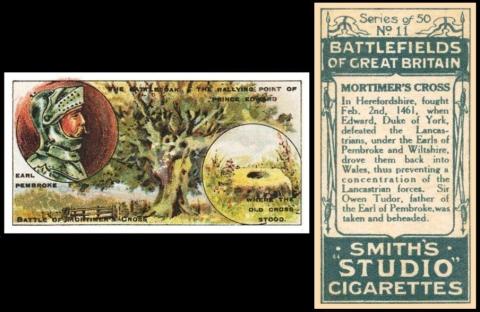
Now the clue here could well have been "Battlefields", but not of Great Britain. Instead it was the oak tree, because an eightieth anniversary is an Oak Anniversary, and this year is the eightieth anniversary of D-Day. Why it seems to be an oak is because an oak tree is a symbol for longevity, endurance, and strength, and also because by that time its roots are firmly fixed in the soil. The odd thing is that it is almost impossible to trace when the anniversary began, and when it was called oak. To be honest, if we are thinking in terms of wedding anniversaries, it would have to be quite recent, because few couples were together for eighty years until the last couple of centuries, their life spans were not that long. Even if they got together as teenagers, like Shakespeare`s Romeo and Juliet , they would be lucky to be married for twenty years - the average life expectancy then being just thirty years of age. Even in the 1800s this had only risen by ten years. And by 1900 it was only fifty.
The main listing for this set can be found at https://csgb.co.uk/cardoftheday/2024-03-20 - and this has the links for the other brands that we have featured so far.
The Battle of Mortimer`s Cross is a bit of an enigma, battle-wise. It was one of the most important events of the Wars of the Roses and yet there are discrepancies in vital information; the date was recorded as the second, the third, or the fourth of February by different sources, and even the location of the battle is not known exactly. Our card gives the second.
What we do know is that it was fought along the River Lugg, in Herefordshire, near to the Welsh border.
Fighting for the House of Lancaster were Jasper Tudor, the Earl of Pembroke (he is shown on this card). He was also Henry VIII`s Uncle. Alongside him was his father Owen.
On the other side, fighting for the House of York, was Edward IV and his army, and the oak shown on this card was his rallying point.
The Lancastrians started the battle first, and hoped to rout the Yorkists quickly, in a two pronged attack, but this did not work, possibly because the Lancastrian armies were not so adept at warfare.
There was also another, way more intriguing event, though, and that was a parhelion, a natural phenomena associated with very cold weather, which makes it look as if three suns are in the sky. And as the sun rose that morning this had taken place. The Yorkist soldiers, on seeing it, panicked, but they were told that it was a sign of victory, that the Holy Trinity was on their side, and that it assured them of a decisive victory. And so they did.
We do not know what the other side thought, or if they were even in the right place to see it. But Owen Tudor paid for this with his life, for, as it says on our card, he was "taken and beheaded".
